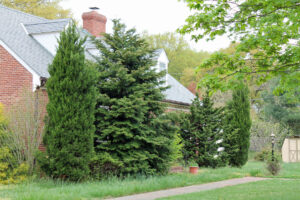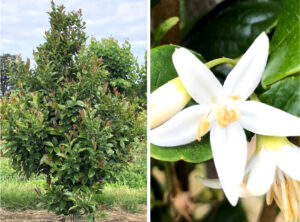How Many of These Top 10 Garden Foulups Will You Do This Year?
March 25th, 2025
Not to insinuate that you’ve been lousing up your yard and garden, but from my travels over the years, it’s apparent that a lot of people are.

This is what happens when you’re not paying attention to ultimate plant sizes.
I’ve seen some sorry stuff going on… plant-killing stuff, work-generating stuff, money-wasting stuff, and just plain trouble.
Most of it is due to, as they say in the nuclear industry, “operator error.”
But hey, it’s understandable. How many people learned anything at all about gardening in school? How many have ever had lessons in shrub-pruning? Is anybody born with an innate sense of when to spray for borers?
Until you learn the fine art of yard-keeping, it’s basically a wing-it proposition. And that’s when the plant-killing, work-generating, money-wasting stuff happens.
Maybe we can eliminate some of that this year by having a quick look at the top 10 things that go wrong in the landscape and how to sidestep them.
1.) Planting too close. This is hands-down the most common goof, and it includes planting plants too close to one another as well as too close to the house.
A local landscaper once told me that three-quarters of his work involves ripping out overgrown plantings and starting over. Save yourself work and expense later by spacing well – even if things look too far apart at first.
Don’t go by how plants look now. Go by the “mature” sizes on the plant tags. If a shrub is going to grow to a spread of six feet, plant them six feet apart or at least three feet away from buildings or other objects. (A six-foot spread means the plant will grow three feet out from the center in all directions.)
When in doubt, add some extra elbow room since plants never stop growing and can go beyond those plant-label listings. Think of the plant-tag sizes as “maintenance sizes,” and figure on trimming/pruning when they reach the space you’ve allotted.
If the bare space bugs you early on, put in annuals or easy-to-move perennials between those young evergreens and shrubs.












